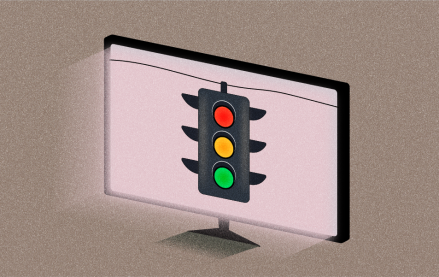How Pinterest went from selling views to selling clicks and conversions, with CRO Bill Watkins

Subscribe: Apple Podcasts • Spotify
Pinterest has spent the last few years quietly battling for ad dollars, courting advertisers with AI-powered products, like its Performance+ tool which launched last fall, and beefing up its performance capabilities to capture a bigger portion of ad budgets.
Based on the platform’s latest earnings, in which Pinterest reported $3.65 billion in total revenue for 2024, that quiet battle seems to have reached a fever pitch. Pinterest’s efforts seem to be paying off.
“Five years ago, we were predominantly selling views,” Bill Watkins, Pinterest’s chief revenue officer, said on the latest episode of the Digiday Podcast. Per Watkins, Pinterest has shifted its focus from more brand marketing tools to strike a better balance with performance marketing tools, something the industry has been after in an increasingly crowded digital marketplace.
“[Pinterest went] from selling views to selling clicks,” Watkins added, “and ultimately selling conversions for advertisers to be where we are now with P+, Pinterest’s Performance+ [AI-powered ad tool.]”
On this episode of the Digiday Podcast, Watkins talks Pinterest’s lower funnel ad offerings, and balancing an increased ad load with the user experience.
Also on this episode, hosts Kimeko McCoy, senior marketing reporter and Tim Peterson, executive editor of video and audio, discuss the latest merger and acquisition news, TikTok ban movement (or lack thereof) and YouTube’s Premium Lite, its new tier of subscription service.
Here are a few highlights from the conversation, which have been edited for length and clarity.
Ads as content
As we experiment with ad load, it’s also important to note that we view ads on Pinterest as content. A shopping feed from Amazon or from a Shopify merchant, that can be shown organically or that can be shown through a paid ad. But with the data asset that we have, what we know about our users, we’re surprising and delighting. We’re having our users discover that, be it in home feed or in traditional search or related search. When you tap on a pin and scroll up, everything underneath that, that’s visual discovery. What we’re finding is, even as we’re increasing ad load in certain pockets of the surface, at the exact same time, the relevancy of our ads is going up.
Signals around ad tolerance
[We look at] one, how often is that user coming back to the service? How often are they pinning? What are they clicking on when they click out? How much time are they spending off-site? Ultimately, especially through conversion API [application programming interface that allows different apps to communicate and exchange data with each other], can we see that we’re helping to lead them to a high quality conversion? Those are just a sampling of what I would call a basket of metrics that we review diligently on a daily basis.
‘Advertisers are voting with their dollars‘
Over the last two and a half years, we have seen an evolving ad market. And what we have seen in that ad market, very clear, it doesn’t matter if you are advertising in the upper funnel and you do not have conversion visibility, or if you’re a merchant advertising in the lower funnel and you own the transaction. The focus on performance, up and down the [marketing] funnel, has been overwhelmingly clear. Advertisers are voting with their dollars. Along those lines, as we’ve invested in our ads’ AI capability. We’ve also invested heavily into our measurement capability with nearly 100 measurement partners. We have our conversion API and our other first-party solutions.
I guess where I’m going with this is, the landscape has never been more focused on performance.
More in Media

What publishers are wishing for this holiday season: End AI scraping and determine AI-powered audience value
Publishers want a fair, structured, regulated AI environment and they also want to define what the next decade of audience metrics looks like.

Media giant Essence launches a marketplace for Black women-led brands
Essence has launched WeLoveUs.shop, a new online marketplace dedicated to Black women-led brands.

In Graphic Detail: The state of AI referral traffic in 2025
The stats reveal a new audience pipeline forming outside of traditional search and social platforms.






